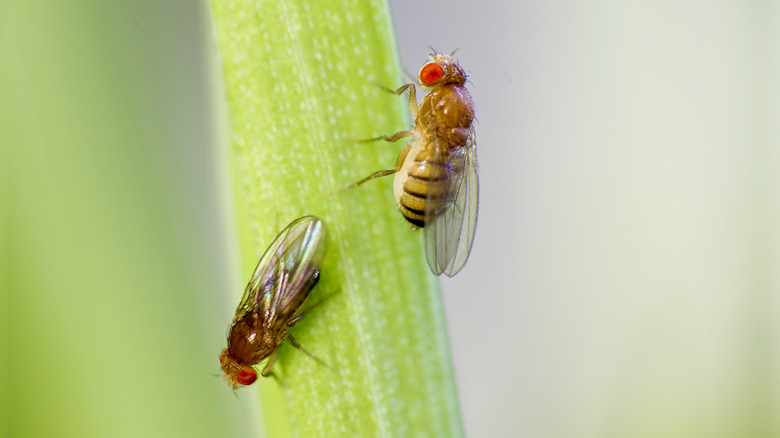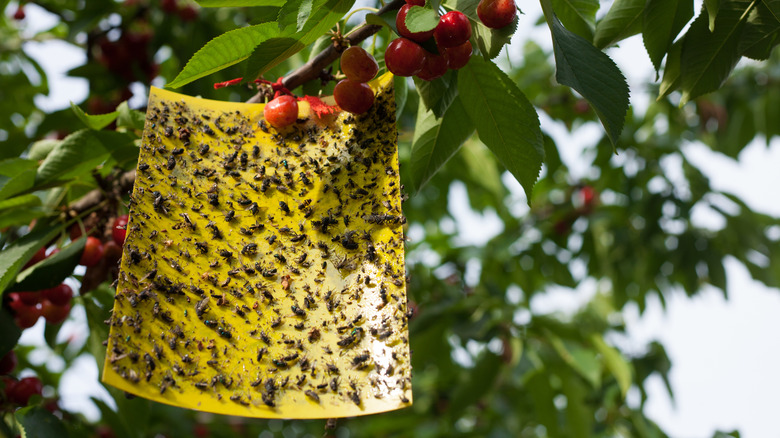Get A Handle On Your Outdoor Fruit Fly Infestation With This Vaseline Hack
Whether you have a couple of fruit trees in your backyard or acres of orchard, you've likely battled fruit flies. These teeny, winged pests seem inoffensive until you encounter their offspring when biting into a juicy apple you nurtured for months. U.S. fruit growers mostly deal with apple maggots (fruit fly larvae) and Suzuki fruit flies. Hawaii has the solanum fruit fly, melon fly, and Medfly, too. (And yes, there's a difference between fruit flies and gnats.) Eradicating insects in the Tephritidae family outdoors is simpler, cheaper, and more eco-friendly than you probably imagined. Craft a sticky trap from a tub of Vaseline or similar off-brand petroleum jelly, a yellow object to smear it on, and something to hang the whole thing with.
Bottle funnel traps with liquid bait are most often recommended and arguably work better for getting rid of fruit flies once and for all. But sticky traps work well enough for most gardeners. Most consist of a sheet of sticky yellow paper with a hook to hang it from a branch. Some, called Ladd traps, feature a red ball in the middle of the card. It's designed to look like a ripe apple and sometimes contains scented bait that increases the trap's effectiveness. Hanging sticky traps early enough, just when the season starts, allows you to monitor the arrival and number of pests and judge when best to apply pesticide (or whether to apply any at all) to protect your growing fruit.
Make it, and they will come
Say goodbye to fruit flies with the help of something yellow (or red) and hangable that you can cover in petroleum jelly — paint sample cards, broken plastic toys, paper plates, or a piece of colored paper (6 x 12 inches in size) slotted into a transparent plastic page protector. You'll hang it from a branch, so attach a generous length of sturdy plastic string, wire, or an old coat hanger to the object. If you want to create your own Ladd trap, two Styrofoam florist or craft ball halves painted red with a glossy outdoor paint work well as the "apple." Walmart sells a pack of 50 2.3-inch halves for $9.42.
Another option is to drill a hole in a red wooden ball about the size of an apple (larger than 3 inches) and, again, make it hangable using wire or twine. Whatever you choose, the next step is to thoroughly coat it in 1 tablespoon of petroleum jelly using a knife or craft stick. Hang the traps in infested trees, making sure they're at least 5 feet from the ground. Small trees require up to two traps, while a large tree could need five or more. Another way to judge how many you need is using this rule: 4 to 6 traps per acre of orchard. Check the traps regularly; when they're full of stuck insects, simply wipe them clean using a paper towel or rag, apply more Vaseline, and rehang them.

